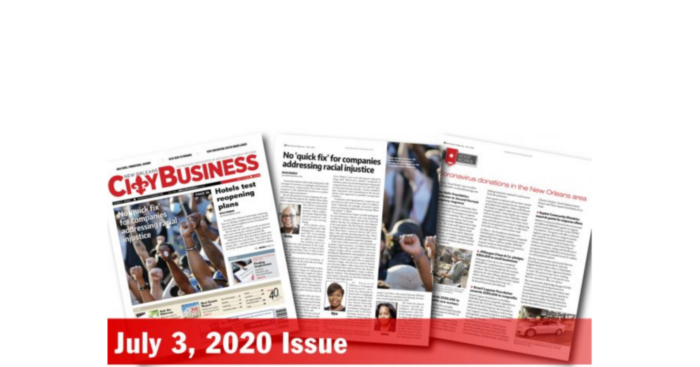CityBusiness featured this sponsored article by NSNO in its July 3, 2020 issue. The article details how Edwards Hynes was able to adapt to the challenges presented by COVID-19.
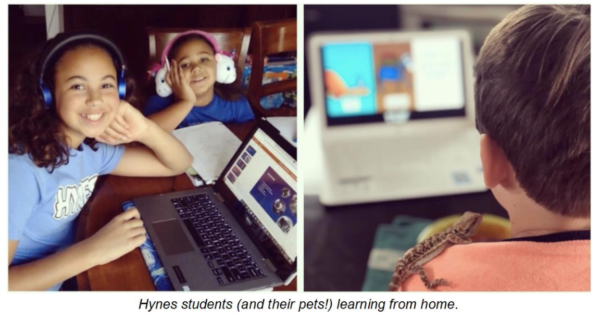
Edward Hynes Charter School, a public school in Lakeview (that recently opened a site for one grade on UNO’s campus, as part of a partnership with the university) educates students from pre-K through 8th grade. Hynes has earned an “A” rating from the state for years.
When COVID-19 closed schools this spring, however, even the strongest schools in our city faced a challenge in adjusting.
Hynes CEO, Michelle Douglas, did not waste a minute. Douglas has long made sure that educators at her schools are given real authority and autonomy. This meant that even in a moment of crisis, her teachers were able to adapt and help manage a smooth transition to distance learning.
In doing so, they found innovative ways to use technology that will serve students even when schools open back up.
When schools closed
“On Friday, March 13, the day school closures were announced, I said to my team, ‘rest and take care of your families.’ I told them that I’d work on it over the weekend and by Monday, March 16, we would have a plan in place.”
Michelle worked that weekend to wrap her head around the situation, figuring out how they could adjust existing structures to support distance learning and teaching. On Monday, she shared a working plan with her team, understanding that it was “dynamic” and would change along the way.
They would leverage the school’s existing Microsoft Office suite to share documents, record videos, and conduct live video lessons. They would also make the most of existing professional learning structures to keep teachers aligned, aware, and supported as they managed teaching at a distance. They would make the most of their strong relationships to make sure students had what they needed to learn and thrive.
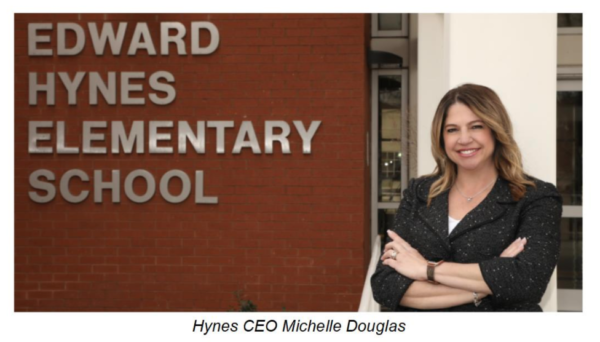
Assessing students’ needs
Since Hynes would be conducting distance lessons online, they first needed to assess their students’ access to technology.
“At first, we focused on finding out which families are connected to technology and what different families needed. We asked each other, ‘who haven’t you heard from, and why?’” Douglas asked. Educators, social workers, and nurses alike reached out to families, and Hynes also sent out a school-wide survey.
They also recognized that if students weren’t logging online, a lack of access to technology might not be the only reason why.
“Hynes intentionally incorporates strong social and emotional support for students and families and aims to support the “whole child.” So we were trying to figure out who needed other resources beyond technology, too. We wanted to figure out if someone wasn’t showing up to an online class because they didn’t have internet, or because they had lost a family member, or because they were sick, or any other reason.”
Once they determined this, they could connect students with resources of laptops or Wi-Fi hotspots, mental health supports, healthcare information, food assistance, and more.
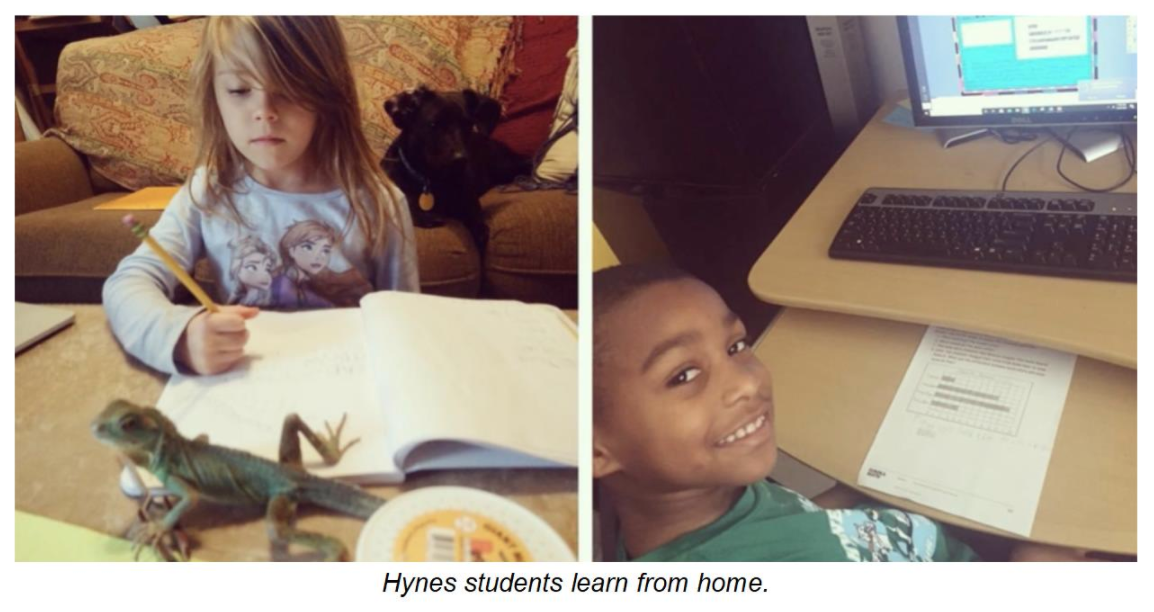
The power of team
Hynes’ plan activated teams of staff members schoolwide. Because of Hynes’ focus on empowering its staff, each team was able to leverage what they did best. Social workers and nurses reached out to families about social-emotional needs, the technology team helped roll out the video-conferencing platform and started a help desk, and the finance and operations teams applied for a Paycheck Protection Program loan from the federal government’s CARE act.
Hynes’ educators, of course, were leading the charge for what instruction would look like, making sure to prioritize curriculum designated as the highest-quality from the state. The school already had structures in place to support teachers’ collaboration. All school year long, each grade level team meets as a small group, guided by an experienced coach, called an “Instructional Facilitator.” This did not stop after school closures—it simply became virtual.
Teachers had multiple opportunities each week to connect through video chat as a team. They collaborated on lessons, activities, and even enrichment programming for students. They constantly honed their work based on what they were seeing firsthand.
At first, for instance, lessons were recorded and students logged on at their own pace. This allowed for steady delivery of content, but teachers found that keeping students engaged was a challenge. Teachers also struggled to find out what students were taking in and understanding.
To address these issues and make their distance teaching stronger, they began phasing in a new plan: having every child log on simultaneously while the teacher conducted a live video lesson. They saw engagement increase—but they wanted even more.
Finally, they had students sign on through video, too, so they could see one another’s faces. This had the most engagement yet. Students wanted to connect with one another and learn from one another in real time.
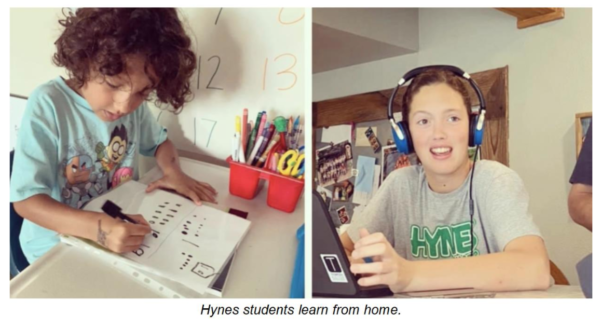
Students take the lead
By the time school closed in May, students were seamlessly using their new online platforms. Middle schoolers, for instance, used technology to bridge history, art, and social justice. An art teacher joined their classes to talk with students about how the platform TikTok, a popular app used to share many short videos, could be used in class to convey information.
“It was pretty incredible,” explained Jennifer DeBlieux, one of Hynes’ Instructional Facilitators. “The eighth graders did research on civil rights, and then they used TikTok for their presentations. They saw how it could be used to really tell a story, and they were so mature about it. They used the platform creatively and responsibly.”
A transformation
As Hynes’ educators saw this type of powerful student work, they realized it needed to continue, regardless of whether or not school was in person or online.
“This shift ignited such a major transformation. Even in elementary schools, we need to be teaching students 21st century learning skills. And we had a strong tech program at Hynes, but I feel like now we are teaching things that will really make our students successful in their jobs later on.”
So Douglas says that when school starts up again in the fall, they will continue to integrate technology, even if there are more opportunities to learn in person.
“This has opened eyes for our teachers and students. It’s been a great experience for them to see how instruction can be different, and they really liked it. There’s no going back from this.”
